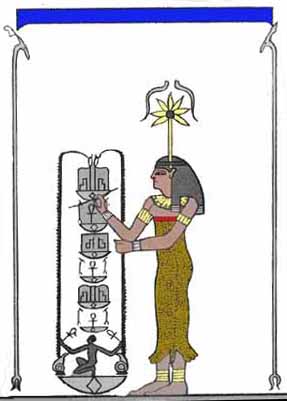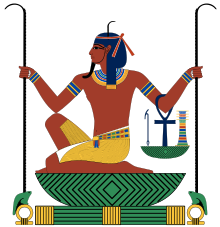According to Manetho Thoth wrote 36,525 books. According to Seleukos it was 20,000. Either he was a prolific writer or the ancients were portraying him as the keeper of the books. Sometimes in history people commission the preservation of important books for future generations and are recognized for doing such.
Take for instance The King James Bible. His name is ascribed to the bible, but he was not the original author of all the books compiled in the Bible. Thoth was likely not the author of all of the knowledge and books modern translators say are ascribed to him. It is more plausible that he commissioned a library. Imhotep likely continued this tradition of preserving the libraries during his time. It was later in history that the Egyptians did not do such a good job at preserving their books when they were burned by invaders from the north. This practice continues even today.
Seshat was the first representation of the keeper of books. As keeper of the books students who wanted to learn knowledge would call to her, the women of time, at the midnight hour of the new year. It is my hope that in 2013 we do more to preserve ancient libraries and antiquities. Last week marked the day that many thought would be the end of the world. This misinformation was interpreted from a book that was alleged to have been preserved from a fire that burned a library belonging to the Mayans.
Take for instance The King James Bible. His name is ascribed to the bible, but he was not the original author of all the books compiled in the Bible. Thoth was likely not the author of all of the knowledge and books modern translators say are ascribed to him. It is more plausible that he commissioned a library. Imhotep likely continued this tradition of preserving the libraries during his time. It was later in history that the Egyptians did not do such a good job at preserving their books when they were burned by invaders from the north. This practice continues even today.
Seshat was the first representation of the keeper of books. As keeper of the books students who wanted to learn knowledge would call to her, the women of time, at the midnight hour of the new year. It is my hope that in 2013 we do more to preserve ancient libraries and antiquities. Last week marked the day that many thought would be the end of the world. This misinformation was interpreted from a book that was alleged to have been preserved from a fire that burned a library belonging to the Mayans.
" Alonso de Zorita wrote that in 1540 he saw numerous such books in the Guatemalan highlands that “...recorded their history for more than eight hundred years back, and that were interpreted for me by very ancient Indians.” (Zorita 1963, 271-2). Fr. Bartolomé de las Casas lamented that when found, such books were destroyed: "These books were seen by our clergy, and even I saw part of those that were burned by the monks, apparently because they thought [they] might harm the Indians in matters concerning religion, since at that time they were at the beginning of their conversion." The last codices destroyed were those of Tayasal, Guatemala in 1697, the last city conquered in America.[4] With their destruction, the opportunity for insight into some key areas of Maya life has been greatly diminished."The Mayan codices, written in hieroglyphic script on bark cloth from the fig tree, was a time keeping document developed around the 5th century. Among the thousands of books that were burned 4 remained and one that people today have relied on as a source of fact for things that are to come on earth. Many of these ancient books throughout the ages have been used as prophecy books. However, it is man that attributes meaning and translations to these ancient text, often out of context and with little information outside of a hunch. It is my deep concern that those who are the keepers of antiquities take the false information popularized from such interpretations and destroy the artifacts and books themselves. We are in the information age and our children will have the ability to analyze information in ways we are not able to today. For this reason, it is very important that we be the keepers of our libraries and hold this information for thousands of years into the future, as our ancestors have done. It is the most important gift we can give to future students, whether we can see it now or not.










.jpg)





